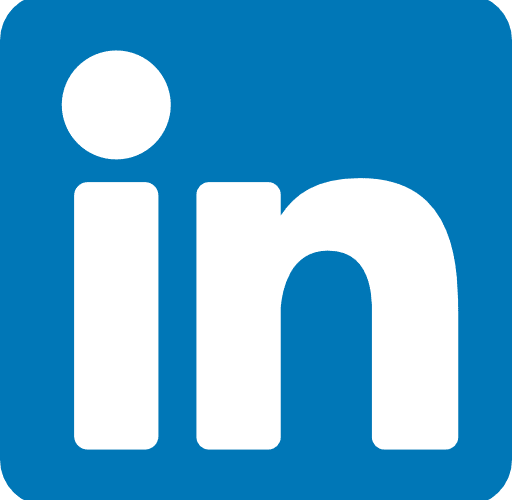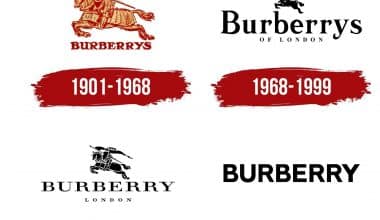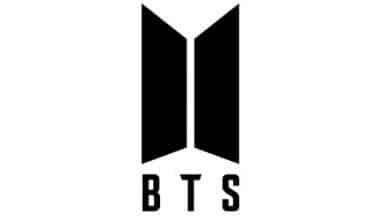The LinkedIn logo features LinkedIn blue, black, and white as the color code. In most cases, a white background will provide the best visibility and readability for the LinkedIn logo. When the 2-color logo or [in] isn’t appropriate, you can switch to one of these other variations instead. The use of “in-mark” is governed by the same set of guidelines. The free LinkedIn logo and box assets come in a variety of file types, resolutions, and sizes. Never try to re-create the LinkedIn logo; instead, always utilize the provided artwork and carefully follow the directions for its proper design. Let’s discuss more the history of the LinkedIn logo.
Linkedin Logo Overview
LinkedIn, one of the most well-known social networking sites, was developed specifically to facilitate connections between professionals from different parts of the world. The service’s primary focus is on facilitating user-driven workforce and employment development. Furthermore, the American social network, LinkedIn, has a logo that shows the focus and ease of business communication. But the graphic design does a good job of showing the important stages of platform development and highlighting what makes the service special.
Reid Hoffman, Konstantin Guericke, Jean-Luc Vaillant, Allen Blue, and Eric Ly are the people who came up with the idea of starting this company. The network has been around since 2002 and has its headquarters in the city of Mountain View in the state of California.
- Established on May 5th, 2003
- Reid Hoffman & Eric Ly, Co-Founders
- The company’s headquarters are in Sunnyvale, California.
What is Linkedin?
It’s a social network made specifically for connecting businesses with the professionals they need. More than 500 million people from 200 countries and 150 industries are registered with the tool.
The Linkedin Logo Meaning and History
The official launch of the LinkedIn logo occurred at year-end in 2002, but the service didn’t actually begin operation until early 2003. However, in the spring of 2011, Eric filed the necessary paperwork to become public, and by the summer, he was officially listed on the New York Stock Exchange. Microsoft decided in January 2017 to buy the company and use its technology. Images cover the whole history of the affiliate platform, from its start to its most important moments.
At the time of the launch, the company also got a new logo that is both modern and easy to recognize. Since its establishment, it has only undergone two minor changes. “Linked in” is a phrase made up of two words. Because of the minimal distance between them, they give the impression of being fused.
Furthermore, LinkedIn presents itself as a professional website, and its visual heritage supports this claim. In its nearly twenty years online, LinkedIn has undergone only two logo redesigns, with the current version being a tweaked version of the first symbol launched in 2003.
In general, LinkedIn does not let its users, third-party developers, partners, or the media use any of its trademarks, logos, web pages, screenshots, or other brand characteristics. Some limited and specialized exemptions are listed below. For any other use, you’ll need LinkedIn’s permission first.
Linkedin Logo Evolution 2003-2020
The original release of the LinkedIn logo was made with a professional aesthetic in mind, so it’s really functional and stripped down; it’s the kind of thing that makes a serious impression right away. On the left side of the image, “Linked” is written in two weights of the font Source Sans: light and semi-bold. However, it is all lowercase except for the opening letter and in a simple sans-serif black font. Furthermore, the element’s closing in-quote comes at the very end. It sits in its own blue, rounded corner square. Its hue stands out against the cobalt backdrop since it is white, making it look different from the others. When space is at a premium, it might be used alone as an emblem. In addition, the “I” and “L” dots are taller than the “k” and “d” ends.
However, the owners chose to update the LinkedIn logo somewhat after it had been in use for eight years. Since the site has been approved for an initial public offering (IPO) on the New York Stock Exchange, naturally. Designers enlarged the sign by approximately two millimeters to make the sign more legible, yet the difference is barely noticeable. As an added touch, the letter “e” was modified to add character by being smaller at the bottom and curving upwards.
The LinkedIn logo was changed two years after it became Microsoft’s subsidiary. Furthermore, the LinkedIn logo color code was modified, which is why the sign is both monochromatic and starkly opposed. The blue and white colors in the LinkedIn logo were switched so that the blue is now at the beginning of the word. But the second part is done in white text on a blue background. In addition, the new management has stressed this kind of personalized service.
Brand Evolution Continues 2021- Till Date
The new LinkedIn logo, much like the one that came before it, only features a single color code rather than three. On the other hand, it is noticeably brighter than it was before. The blue was given a cobalt hue, which is a color that is both rich and appealing. The inscription is done in a font that is unique to the community.
Linkedin Logo Symbol and Font
The LinkedIn logo radiates cutting-edge cool and a “web 2.0” aesthetic. However, a symbol of this caliber just could not have been made in the previous century. Furthermore, two words, “Linked” and “in,” make up the wordmark. The separation between the two terms is quite thin. Within a blue square with rounded corners, the word “in” is written. Black text denotes “linked,” whereas gray text denotes “in” (white).
In some circumstances, there’s a need to “reduce” the logo. For instance, if there’s not too much space or the space has a square shape, then it is vital to make the logo more readable. If this is the case, “linked” is dropped, and “in” is retained. This method was used, for instance, to market square chocolates with the LinkedIn logo.
The look and feel of the well-known website are based on the same professionalism, seriousness, and forward movement that make up the site’s mission. LinkedIn’s blue and white color scheme shows that the company is well-known and dedicated to tradition, which are qualities that can be used in any business. However, the LinkedIn logo consists of two white lowercase “in” letters within a blue circle or square with rounded corners and the same font as the company’s primary official logo.
Furthermore, when it came to redesigns and updates, nothing too shocking or unusual occurred. It’s the same basic idea, now improved and polished. You don’t need sharp angles or fluorescent colors to make something look modern and chic.
LinkedIn’s logotype uses a font family named Source Sans. Any company-related communication can be conveyed using this medium. There are several weights of the Source Sans font available, however, the two most commonly used are “Light” and “Semi-bold,” as suggested by the manufacturer.
Linkedin Logo Color Code
The color blue, the color black, and the color white make up the LinkedIn logo color code. The color blue, which is referred to as LinkedIn Blue, serves as the foundation of the brand’s identity. Furthermore, there could have been more than one factor behind the company’s decision to go with blue. One of them is probably the fact that a great number of people automatically identify the LinkedIn logo design with online networking and communication (have a look at the color code that Facebook uses, for example). Additionally, there were senior managers from PayPal among the people who design the LinkedIn logo, which is why it is only natural that the hue that is close to PayPal blue was selected as the primary color for the logo.
In addition to this, the psychological symbolism of the color blue contains attributes such as intelligence, authority, power, and success, all of which are harmonious with the identity of the brand. Blue is one of the brand’s primary colors.
Linkedin blue and white are the two colors that are recognized as representing the company. The colors of the Linkedin logo are meant to convey professionalism and clarity. The color scheme of Linkedin went through some changes in 2019. However, the color scheme used on the LinkedIn logo can be appropriated for use in design projects and applications. This is where you can find the Pantone, HTML, HEX, RGB, and CMYK code for the Linkedin logo, as well as the color scheme.
The Linkedin logo color code in HEX, RGB, CMYK, and Pantone
| Color Name | HEX Color Code | RGB Color Code | CMYK Color Code | Pantone Color Code |
| LinkedIn Blue | #0A66C2 | (10, 102, 194) | (87, 62, 0, 0) | PMS 7455 C |
| White | #FFFFFF | (255, 255, 255) | (0, 0, 0, 0) | Not Available |
The Linkedin brand logo was developed in-house. As a result of its clean, businesslike appearance, Linkedin has adopted the blue and white color design for its logo and identity. In addition, the Linkedin logo has officially confirmed the color code used in the Linkedin logo. You may verify the brand’s signature blue and white colors by checking out the Linkedin website.
How Do I Add the LinkedIn Logo to My Resume?
Recommending a deeper look at your LinkedIn page is one way to spark the interest of hiring managers in your credentials. However, you can do this with the click of a button by including a tiny LinkedIn logo on your paper or electronic resume. Put the URL of your public profile next to the icon so recruiters can find it quickly.
Make your blog, website, or email signature a clickable profile badge or button in addition to using the LinkedIn logo on your resume. When visitors visit your LinkedIn page, they will be able to view your latest work, endorsements from other professionals, and any shared articles or videos. Here are the fundamental steps for adding the LinkedIn logo to your resume.
- Log in at LinkedIn.com and go to your profile page
- To make changes to your public profile and URL, visit the link in the upper right corner of your profile
- To access the Public Profile Badge, you must navigate the right column underneath the Edit Custom URL, Edit Content, and Edit Visibility options
- To make your own badge, just click the button
- To implement the badge on your site or blog, copy the script code provided
- Pick from the badge size that best fits your resume. Badges can be 280 or 330 pixels large for the main page, and 250 or 300 pixels wide for the sidebar
- Copy the code that appears to represent your LinkedIn profile and insert it into your online resume.
Interesting Statistics and Facts About LinkedIn
There is no venue more effective than LinkedIn for marketing your business to business professionals. However, users of the site are able to network with other people in business who share similar interests, apply for employment, and recruit for open positions, as well as keep up with the latest news from organizations and significant people located all over the world.
You will acquire vital insights into how you can include LinkedIn in your social media strategy once you have a solid understanding of how both members of LinkedIn and brands use the channel. Here are some fascinating statistics and facts about LinkedIn
#1. Among Linkedin’s User Base, Men Make Up 57% While Women Make Up 43%
On LinkedIn as a whole, there are many more men than women. Nevertheless, you will need to conduct some research in order to establish the gender breakdown of your particular audience on LinkedIn. Please be aware that LinkedIn does not report any genders other than male and female for its users.
#2. More Than 146% Of the U.S. Workforce Is Engaged on LinkedIn
There are two major insights that can be derived from these facts: 146 million is a huge audience if your audience is predominantly based in the United States, and even if your audience is not in the United States, you probably still have a huge audience. For instance, the majority of the audience is located in the United States, but there is also a sizeable portion of them in China, where I’ve spent some time and where there are more than 32 million people.
#3. More Than 20,000 Businesses in the United States Use LinkedIn as a Recruiting Tool
In addition, each month, those organizations post over 3 million job openings on LinkedIn, and that number is only for the United States. Moreover, if you want to advance your career by producing content that demonstrates your thought leadership, post that content on LinkedIn, where it is obvious that your audience (businesses looking to hire people like you) is active.
#4. With 67.6 Million, India’s Hashtag on LinkedIn Is the Most Popular There
The hashtags #Innovation (38.8 million users), #Management (36 million users), and #HumanResources round out the top five most popular hashtags (33.2 million). However, the prevalence of the #India hashtag should serve as a warning to marketers that they should not neglect the country as a part of their overall strategy for global campaigning.
#5. On Average, 6 People Get Hired Every Minute Thanks to LinkedIn
If the previous statistics and facts about LinkedIn’s user base weren’t convincing enough, this one should be. If a company wants to hire new people in 2023, it will need a polished LinkedIn Page to attract top-tier talent and use the channel to find prospects.
#6. Skills That Are in High Demand on LinkedIn Include
Putting aside the importance of “soft skills,” some examples of what employers value most in candidates are listed below.
- Mobile Development
- Statistical Analysis and Data Mining
- Data Presentation
- SEO/SEM Marketing
- Web Architecture and Development Framework
- User Interface Design
- Cloud and Distributed Computing
According to LinkedIn, highlight your strengths by including the aforementioned talents in your profile. You might think about learning some of these skills if you don’t already have them.
#7. Employees Are Responsible for 30% Of a Company’s LinkedIn Activity
The employees of your company are the people who care the most about the success of your brand, and it makes a lot of sense that they would want to see it thrive. Companies that build comprehensive programs have a better chance of success with the winning strategy of boosting brand reputation through employee advocacy.
#8. A Majority of Respondents Believe That Soft Skills Are More Valuable Than Hard Ones
A LinkedIn survey of 2,000 company leaders found that “soft skills” like communication and getting along with others are more important than technical skills. However, they ranked leadership, communication, teamwork, and time management as the top soft skills. You might want to think about creating some content for LinkedIn that touches on these ideas.
Furthermore, if you excel at sales, for instance, you could provide content about what it takes to be a good sales leader, or you may interview people you admire for their sales management skills. Since you are interested in human resources, talk about how time management has changed in that field.
#9. If You Run an Ad on LINKEDIN, You Can Get It in Front of 14.6 Percent of the Global Population
That equates to 14.6% of the population older than 18 years old. LinkedIn does not have the largest reach among social networks; however, it does have the advantage of a user base that has self-selected itself based on how much importance they place on its employment.
#10. LinkedIn Is the Primary Source of Business-To-Business Leads
It’s possible that the study’s findings are inaccurate (maybe they only questioned LinkedIn users), but if you’re a B2B marketer and you’re not present on LinkedIn or making it a major part of your strategy, you’re missing out. Get started making content, establish yourself as a subject matter expert, and plot your course to market dominance.
Linkedin Logo Design
A logo is a symbol that represents a business or group. It makes consumers aware of the firm and encourages them to recall their positive interactions with the brand. It should, over time, win you over with feelings of warmth and devotion. Three main functions apply to every logo. Identification. However, a brand’s logo is a visual representation of the company in the commercial world. A logo may instantly and graphically symbolize the organization to the world. Since the logo is often the first thing a buyer sees, it needs to be eye-catching and professional. Distinction.
A logo’s success hinges on its individuality. It sets the company apart from its rivals, making it easier for clients to identify it among its peers and make a buying decision. Communication. The design of the LinkedIn logo serves as an unofficial slogan. One or both of these approaches may be used. However, a good logo conveys an encouraging message to its target audience. It could be refined or casual, stable or flexible, caring or professional, imaginative or not, etc. Remember that a logo is not the same thing as a brand. For many businesses, their logo is an integral aspect of their overall brand. Ultimately, the brand stands for the company’s values, its reputation, and the impression it gives to the public.
In addition, the brand is more than just the logo; it extends to everything from the fonts used internally to the colors used in the physical space, to the uniforms worn by employees and the themes explored in marketing campaigns. As such, a logo isn’t a brand in and of itself, but it is a crucial part of any brand’s identity. A logo’s elements should all be easily discernible without any unnecessary detail.
Can I Use the LinkedIn Logo on My Website?
The LinkedIn logo may not be used in any way without prior written permission from LinkedIn. You can, however, put the LinkedIn logo on your site to direct people to your professional profile there, similar to the profile pictures used on social media platforms like Instagram, Twitter, and Facebook.
Also, read PERSONAL BRAND: Effective Tips For Personal Branding with Examples
What Is the LinkedIn Font Logo?
The font that is utilized in the LinkedIn logo is referred to be Source Sans, and it was developed specifically for use on the LinkedIn platform. On the other hand, it has a striking resemblance to other typefaces, such as PGF Now Extra Bold and Sultan Ruqah Longo Bold.
How Do I Insert the LinkedIn Symbol in Word?
- Select Insert > Object from the menu bar
- Make use of the option to Create from a File
- Choose the desired file by clicking the Browse button
- Pick the Insert option
- To embed an icon, select Display as an icon; to connect to a file, select Link to file
- Go ahead and click OK.
How Do I Add the LinkedIn Icon to HTML?
Once the LinkedIn logo is provided. This icon can be used interchangeably in your work. It is imperative that the Font Awesome Icon library be included first. A simple HTML CSS class, fa fa-Linkedin, will add the library’s icon to any element. Linkedin icons created with Font Awesome are fully scalable. You can adjust the size of the icon for Facebook and LinkedIn by changing the font-size CSS property. Here is how to insert a LinkedIn icon into a web page using HTML
- Simply insert the following syntax and icon code into your webpage, and you’ll have an icon ready for use.
- Find the whole HTML code for the Linkedin icon.
- And after that, you have to insert the code that is shown between the closing and opening tags for the style element.
- After successfully adding the code in the previous sentence, the next step is to connect the CSS file to the head tag.
- In addition to this, you are required to insert the following code into the body> tag of the HTML content.
Linkedin Logo White
For the greatest possible effect and readability, the LinkedIn logo should ideally be shown on a white backdrop. In situations when this is not an option, you should be sure to use backdrop colors or photographs that offer an appropriate level of contrast with the logo.
Make use of the two-color LinkedIn logo on photographs or backgrounds that are white or a light color. However, the “in” thing is to keep one’s skin white. When working with dark backdrops or pictures that have adequate contrast for all elements of the logo, use the two-color reverse version of the logo. The “in” thing is to keep one’s skin white. When using the LinkedIn logo on pictures or backgrounds with dark colors, use the solid white version. It is important that the ‘in’ be see-through. In addition, use the solid black LinkedIn logo on backdrops or photographs that are white or light in color, as well as in print applications that just require one color. It is important that the ‘in’ be see-through.
Can I Use LinkedIn Icon?
The LinkedIn logo may not be used on websites or business cards, according to LinkedIn. To advertise your presence on LinkedIn, you may use the “in” logo on your website and/or business cards.
How Do I Get a Verified Logo on LinkedIn?
All you need to do is ask LinkedIn for verification, then wait for a four-digit code to arrive in your company email account. And after entering the code into LinkedIn Lookup, voilà! You’re confirmed. On LinkedIn, a person’s profile may still be legitimate even if there isn’t a checkmark next to it.
How Do You Copy the LinkedIn Symbol?
Ctrl-C or right-clicking on the highlighted symbol and selecting COPY from the right-click menu will allow you to copy it. To copy something on a Mac, press Apple+C. Your symbol has been copied and is prepared for pasting.
Do Companies Verify LinkedIn?
If your organization is on our work email verification support list, you might see verification on your “About this profile” card. The number of businesses whose work email domains can be verified is growing according to LinkedIn.
Does Anyone Care About LinkedIn Badges?
These LinkedIn evaluations and talent badges help you by giving you visibility and credibility. Although they won’t get you the job, they will help you be noticed. In their search results, recruiters see a ton of profiles.
Can You Look for a Job on LinkedIn Without Your Employer Knowing?
Please be aware that your activity on LinkedIn during a job search is by default private. When you submit an application for a position, no updates will be received. However, you can share an update from your LinkedIn homepage if you do want your network to be aware that you’re actively hunting for jobs.
Conclusion
If you’re already a LinkedIn member, you can promote your presence on the platform by using the “in” logo to link to your profile, a group, or a company page. In addition, any other use of LinkedIn’s trademarks requires a license agreement.
Similar Posts
- TO WHOM IT MAY CONCERN: All You Should Know!!!
- What is B2B Sales? 15 Best Strategies for B2B Sales Lead
- Inside Sales: Overview, Job Description, Salary (+ Quick Tools)
- SALES LEADS: How to Generate Sales Lead for any Business, Explained!!!






